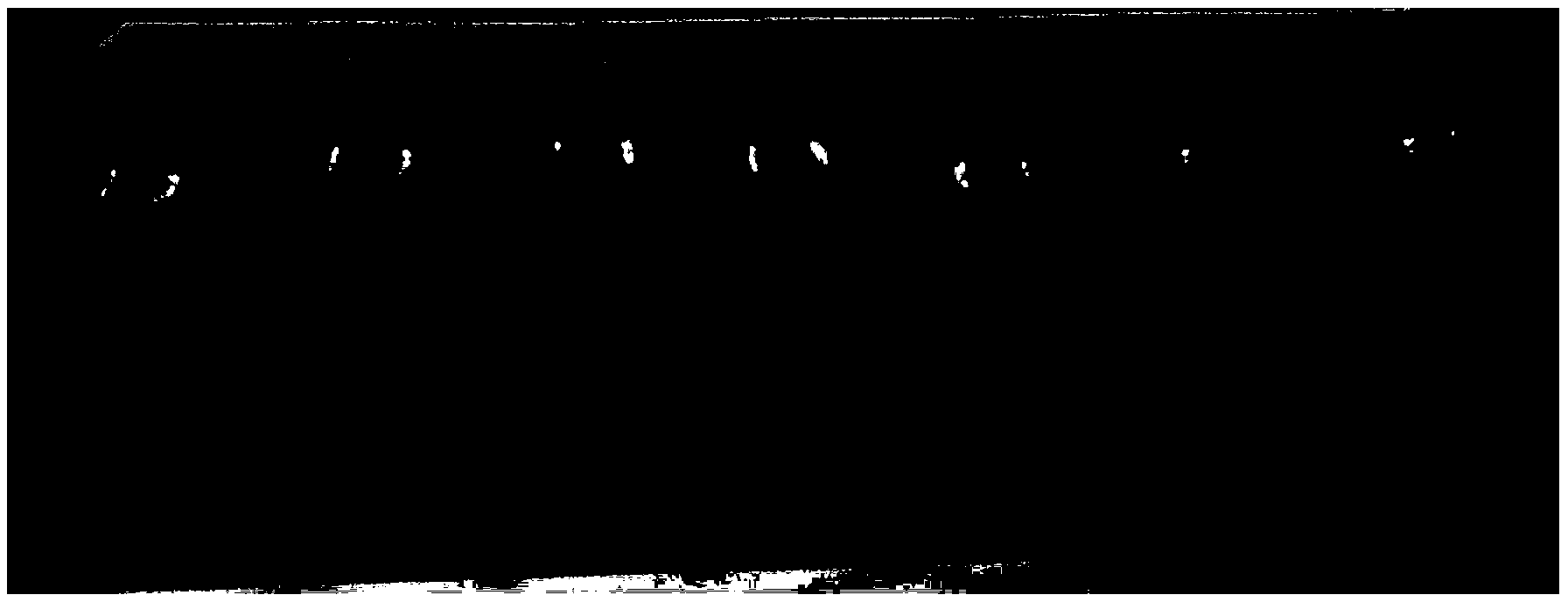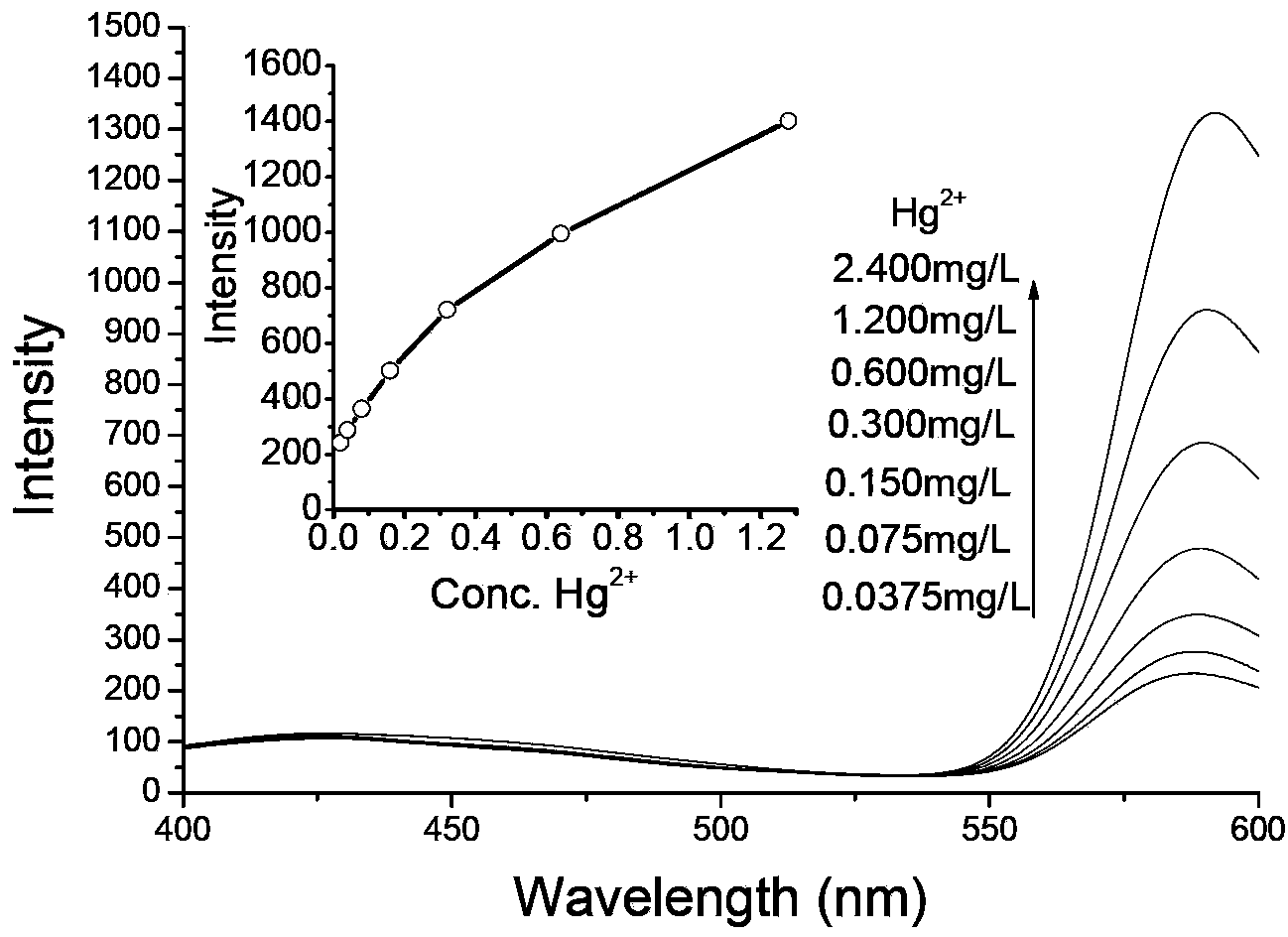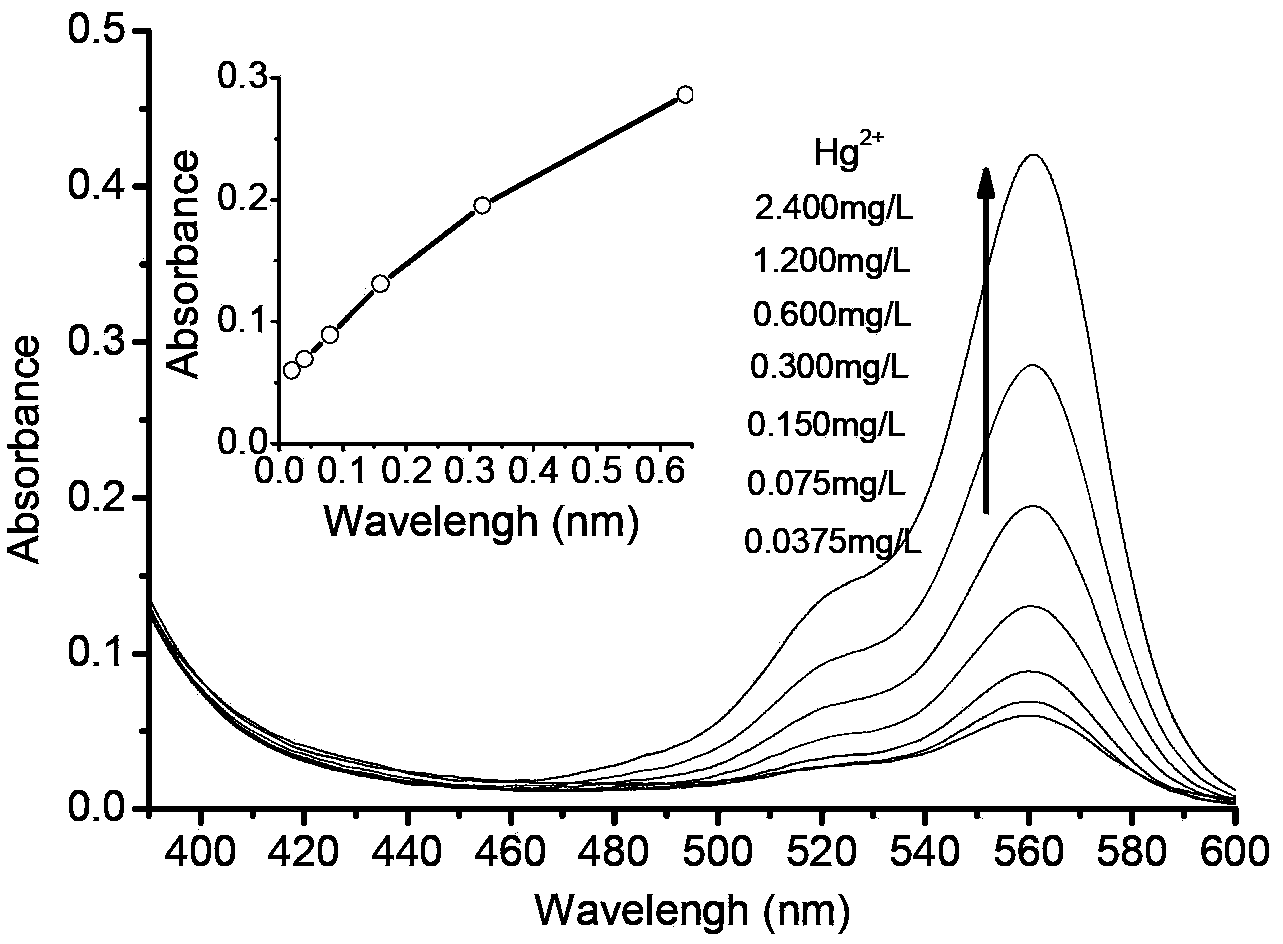Novel fluorescence probe for specific detection of mercury ions, and preparation method and application thereof
A fluorescent probe and mercury ion technology, applied in fluorescence/phosphorescence, organic chemistry, material excitation analysis, etc., can solve the problems of difficult large-scale application, low sensitivity, complicated operation, etc., and achieve easy synthesis, high yield, The effect of easy access to materials
- Summary
- Abstract
- Description
- Claims
- Application Information
AI Technical Summary
Problems solved by technology
Method used
Image
Examples
Embodiment 1
[0024] Weigh rhodamine B (0.5 g, 1 mmol) into a ground-neck Erlenmeyer flask, add 40 mL of methanol, drop in (0.2 mL, 5 mmol) of hydrazine hydrate, install a reflux device, and heat to reflux at 80°C for 8 hours. Until the red color disappears, remove the reflux condenser, heat slightly to evaporate the solvent, wait until a dark oily liquid appears, cool, add a little double distilled water, extract with 40mL dichloromethane several times, combine the organic phases, and wash with anhydrous sulfuric acid Dry over sodium, and evaporate the solvent under reduced pressure to obtain a solid.
[0025] Add 0.25 g (0.5 mmol) N-amino-rhodamine amide to the Erlenmeyer flask, add 1 mmol benzaldehyde solution, mix well, add dropwise 30ml methanol solution, heat and reflux at 100°C for 10 minutes, evaporate under reduced pressure Solvent to obtain mercury ion detection probe compound.
[0026] Add 20 μL, 40 μL, 80 μL, 160 μL, 320 μL, 640 μL, 2.8 mol / L mercury sulfate solution to 2ml (0....
Embodiment 2
[0029] Weigh rhodamine B (0.5 g, 1 mmol) into a ground-neck Erlenmeyer flask, add 40 mL of methanol, drop in (0.8 mL, 20 mmol) of hydrazine hydrate, install a reflux device, and continue heating to reflux at 80 °C 10 hours until the red color disappears, remove the reflux condenser, heat slightly to evaporate the solvent, wait until a dark oily liquid appears, cool, add a little double distilled water, extract with 40mL dichloromethane several times, combine the organic phases, and remove Dry over sodium sulfate and distill off the solvent under reduced pressure to obtain a solid.
[0030] Add 0.38 g (0.75 mmol) N-amino-rhodamine amide to the Erlenmeyer flask, add 1 mmol benzaldehyde solution to mix, add 30 mL of methanol, heat and reflux at 100°C for 10 minutes, evaporate the solvent under reduced pressure to obtain mercury Ion detection probe compounds.
[0031] Add 20 μL, 40 μL, 80 μL, 160 μL, 320 μL, 640 μL, 2.8 mol / L mercury sulfate solution to 2ml (0.5 μmol) fluorescent...
PUM
 Login to View More
Login to View More Abstract
Description
Claims
Application Information
 Login to View More
Login to View More - R&D
- Intellectual Property
- Life Sciences
- Materials
- Tech Scout
- Unparalleled Data Quality
- Higher Quality Content
- 60% Fewer Hallucinations
Browse by: Latest US Patents, China's latest patents, Technical Efficacy Thesaurus, Application Domain, Technology Topic, Popular Technical Reports.
© 2025 PatSnap. All rights reserved.Legal|Privacy policy|Modern Slavery Act Transparency Statement|Sitemap|About US| Contact US: help@patsnap.com



